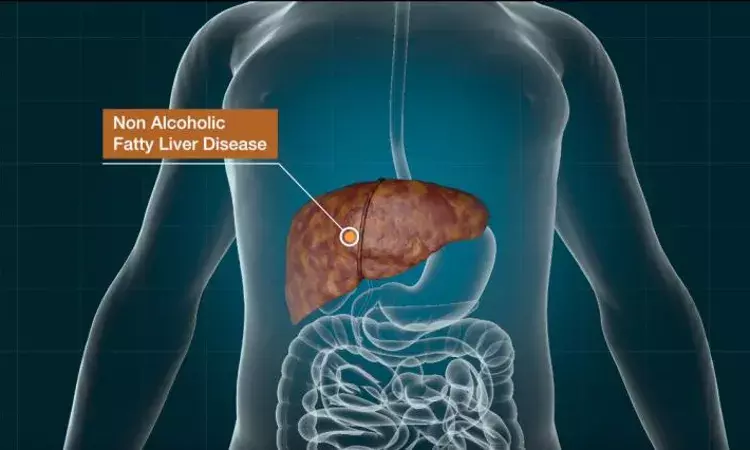- Home
- Medical news & Guidelines
- Anesthesiology
- Cardiology and CTVS
- Critical Care
- Dentistry
- Dermatology
- Diabetes and Endocrinology
- ENT
- Gastroenterology
- Medicine
- Nephrology
- Neurology
- Obstretics-Gynaecology
- Oncology
- Ophthalmology
- Orthopaedics
- Pediatrics-Neonatology
- Psychiatry
- Pulmonology
- Radiology
- Surgery
- Urology
- Laboratory Medicine
- Diet
- Nursing
- Paramedical
- Physiotherapy
- Health news
- Fact Check
- Bone Health Fact Check
- Brain Health Fact Check
- Cancer Related Fact Check
- Child Care Fact Check
- Dental and oral health fact check
- Diabetes and metabolic health fact check
- Diet and Nutrition Fact Check
- Eye and ENT Care Fact Check
- Fitness fact check
- Gut health fact check
- Heart health fact check
- Kidney health fact check
- Medical education fact check
- Men's health fact check
- Respiratory fact check
- Skin and hair care fact check
- Vaccine and Immunization fact check
- Women's health fact check
- AYUSH
- State News
- Andaman and Nicobar Islands
- Andhra Pradesh
- Arunachal Pradesh
- Assam
- Bihar
- Chandigarh
- Chattisgarh
- Dadra and Nagar Haveli
- Daman and Diu
- Delhi
- Goa
- Gujarat
- Haryana
- Himachal Pradesh
- Jammu & Kashmir
- Jharkhand
- Karnataka
- Kerala
- Ladakh
- Lakshadweep
- Madhya Pradesh
- Maharashtra
- Manipur
- Meghalaya
- Mizoram
- Nagaland
- Odisha
- Puducherry
- Punjab
- Rajasthan
- Sikkim
- Tamil Nadu
- Telangana
- Tripura
- Uttar Pradesh
- Uttrakhand
- West Bengal
- Medical Education
- Industry
Visceral fat volume may predict hepatic fibrosis in patients with NAFLD: JAPI
 NONALCOHOLIC FATTY LIVER DISEASE (NAFLD) OFTEN LEADS TO VARIOUS LIVER COMPLICATIONS, BUT THERE IS A LACK OF DRUGS FOR THE TREATMENT OF NAFLD. view more CREDIT: GWANGJU INSTITUTE OF SCIENCE AND TECHNOLOGY
NONALCOHOLIC FATTY LIVER DISEASE (NAFLD) OFTEN LEADS TO VARIOUS LIVER COMPLICATIONS, BUT THERE IS A LACK OF DRUGS FOR THE TREATMENT OF NAFLD. view more CREDIT: GWANGJU INSTITUTE OF SCIENCE AND TECHNOLOGYIn patients with BMI<25, visceral fat was not a predictor of advanced fibrosis.
Kerala: Measuring visceral fat volume at t L3-L4 level ≥167.5 cm3 predicts advanced hepatic fibrosis in patients with nonalcoholic fatty liver disease (NAFLD), a recent study has stated. At a cutoff of 180cm3, visceral fat volume predicted advanced fibrosis in obese males. The study was published in the Journal of the Association of Physicians of India.
Nonalcoholic fatty liver disease is one of the main causes of chronic liver disease. The spectrum of NAFLD includes nonalcoholic steatohepatitis (NASH), simple steatosis, cirrhosis, and advanced fibrosis. Jijo Varghese, senior resident, Medical College Thiruvananthapuram, Thiruvananthapuram, Kerala, India, and colleagues aimed to calculate visceral fat volume at the L3–L4 vertebral level and its association with hepatic fibrosis assessed by transient elastography.
The cross-sectional study included all patients above 18 years undergoing computed tomography (CT) abdomen in the Department of Radiodiagnosis of Medical College Thiruvananthapuram during the study period with NAFLD. Transient elastography was performed. Patients were divided into advanced fibrosis (>10 kPa) and without advanced fibrosis (<10 kPa). The area under the receiver operating characteristic (AUROC) curve was plotted. Sixty-four patients comprised 36 males and 28 females.
The study was conducted in the Department of Medical Gastroenterology along with the Department of Radiology, Medical College Thiruvananthapuram over a study period of 2 years (2016–2018).
The key findings of the study were as follows:
- 46% of patients were having advanced fibrosis (transient elastography>10 kPa) and 54% of patients were without advanced fibrosis.
- About 0.733 was the AUROC for visceral fat in predicting advanced fibrosis.
- The cutoff was 167.5cm3 (sensitivity was 77.4% and specificity was 51.5% in predicting advanced fibrosis).
- Age, weight, BMI, and visceral fat volume measured at L3–L4 level, HbA1c, FBS, and ferritin were independent predictors of advanced fibrosis.
The researchers wrote, "the AUROC for visceral fat in predicting advanced fibrosis was about 0.733. The cutoff was 167.5cm3 (sensitivity was 77.4% and specificity was 51.5% in predicting advanced fibrosis)."
Reference:
Varghese J, Devadas K, Joseph RC, et al. Assessment of Visceral Fat Volume and Its Correlation with the Severity of Hepatic Fibrosis in Patients with NAFLD. J Assoc Physicians India 2022;70(9):23–24.
Dr Kamal Kant Kohli-MBBS, DTCD- a chest specialist with more than 30 years of practice and a flair for writing clinical articles, Dr Kamal Kant Kohli joined Medical Dialogues as a Chief Editor of Medical News. Besides writing articles, as an editor, he proofreads and verifies all the medical content published on Medical Dialogues including those coming from journals, studies,medical conferences,guidelines etc. Email: drkohli@medicaldialogues.in. Contact no. 011-43720751


